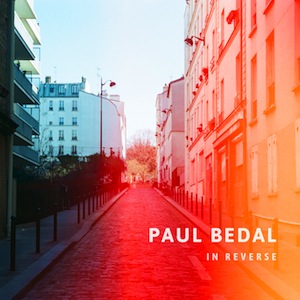Label: Soundsabound Records, 2019
Personnel - Chase Baird: tenor saxophone; Brad Mehldau: piano; Nir Felder: guitar; Dan Chmielinski: bass; Antonio Sanchez: drums.
Rising saxophonist David ‘Chase’ Baird, a recent member of Antonio Sanchez’s Migration, surrounds himself with jazz heavyweights for his sophomore full-length release, A Life Between. Its tantalizing offerings won’t disappoint those who look for diversity in jazz, and in truth, the eight tunes that compose this album lean on post-bop, but incorporate several influences that range from athletic rock to lovely classical. Thus, expect a combination of rough edges and sophisticated roundness.
“Ripcord” causes some positive disturbance through the Led Zeppelin-inspired hard rock power chords that resonates in the first place. Guitarist Nir Felder was the responsible for that, after which he puts his instrument on hold, returning in full force for the brawny final vamp. In the meantime, we have the bandleader and pianist Brad Mehldau speaking confidently on top of a smooth, polished atmosphere. Exhibiting an authoritative command of the saxophone, Baird puts on show a cavalcade of coherent notes assembled with the force of a tornado, finding an essential harmonic-melodic foil in the emotional pianism of Mehldau. The latter fundaments his thoughts with classy ideas, shaping and adapting his playing to the nature of each piece. He provides the perfect romantic atmosphere and palpable silkiness to Robert Schumann’s hymn “Im Wunderschonen Monat Mai”, whose original classical score Baird simply handed to the band.
Rave-up dynamics suffused with brisk melodies and hair-trigger solos can be found on “Reactor”, a 7/4 patchwork that weaves together post-bop, M-base, indie pop, and funk elements. Besides Baird, who grooves under the roiling funk imposed by the rhythm section, also Felder comes to the forefront. Eschewing any preconception related to style, the guitarist enriches his playing with gorgeous effects and favorable surprises, having the syncopated propulsion of Antonio Sanchez as a stimulating factor.
A different, yet still very valid penchant for groove is perceptible on “Wait and See”, an uptempo blues-based piece marked by a hard-boppish refrain. It starts off with Baird’s Coltrane-fueled instincts delivered with timbral variety and with just drums underpinning his agile moves. A steadfast swinging pulse calls for Felder, whose well-developed language congregates appealing rhythmic ideas and quirky chords. The improvisational partitions are extinguished after Dan Chmielinski’s sprightly bass solo.
The group steps into more introverted territory with “As You Are”, a gentle waltz soaked in sax-guitar unisons, and the title track, a soulful 4/4 narration drenched in vulnerability and fervor. “In The Wake (of Urban Overdrive)” acquires dreamy tones with the echoing reverb-drenched guitar melodies and gives the soloists - Baird and Felder - another opportunity to speak up with impressive eloquence.
This serious, exciting jazz deserves attention.
Grade A-
Favorite Tracks:
01 - Ripcord ► 03 - Reactor ► 05 - Wait and See








































